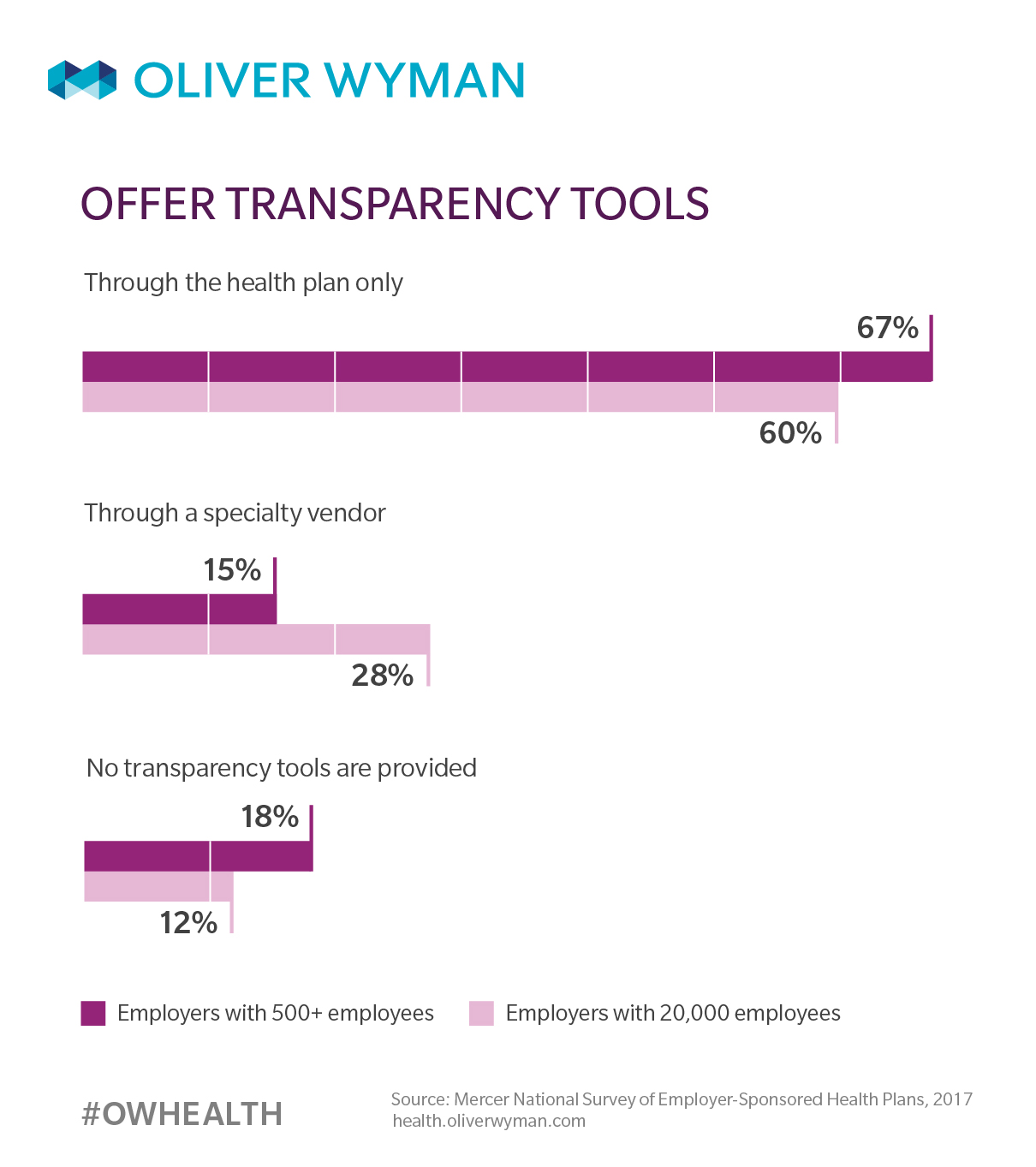Editor’s Note: The following is an adapted excerpt of a whitepaper called “Leading the Way: Employer Innovations in Health Coverage”, published by Oliver Wyman’s sister company, Mercer, and the American Benefits Council.
Rapid advances in technology, along with changing consumer preferences and higher expectations, have led to an explosion of new entrants to the healthcare system. Embracing disruption means leveraging constant changes in the system — with internal stakeholders and external partners — to the best advantage of your employees and your organization.
Likewise, transformation can no longer be the province of a small subset of trendsetters. The US healthcare market is in a state of flux — the changing roles of the market stakeholders and new entrants to the market are leading to increased complexity, new opportunities, and both potential savings and potential new costs.
Budding carrier and pharmacy benefit manager (PBM) consolidations and the entry of nontraditional organizations (such as Amazon) could disrupt the pharmaceutical market as we know it. Meanwhile as healthcare vendors are joining forces to gain efficiencies and leverage, so are some employers — most notably with the recent announcement that Amazon, JPMorgan Chase and Berkshire Hathaway will create an alliance dedicated to improving the health and healthcare experience of their employees. At the same time, new technologies and the rapidly increasing adoption of telemedicine services by health plans are affecting how care is delivered (see infographic below). And though the direction of healthcare reform at the national level remains uncertain, employers clearly need to continue their efforts to keep cost growth at sustainable levels. All of these together will require bold — sometimes disruptive — action, which the below case study of PepsiCo showcases.
Case Study: PepsiCo Increased Employee Engagement Through Personalized Program Hub
The Issue: PepsiCo’s attempts to ensure its employees implement positive health and wellness changes and habits into routines were falling flat.
The Solution: PepsiCo partnered with an engagement platform that offered a personalized, targeted member outreach approach, as opposed to a one-size-fits-all solution. This platform aggregated data from various health plans and point-solution vendors across different health plan point solutions and used claims data to calculate which programs might work best according to individual health needs. A customized online portal pinpointed the best personalized programs for each employee. Online portal visits jumped a reported 61 percent from 18,000 to 29,000 from 2016 to 2017.
The Results: Nearly one-third of eligible employees, and six percent of eligible spouses, registered within the program’s first six months. Telemedicine visits increased by 25 percent during the first half of 2017, compared to the first half of 2016. And, four percent more members completed a wellness questionnaire during the first half of 2017, compared to the first half of 2016. When a targeting messaging tool informed those members in a diabetes program that they still had to activate their glucometers, device activation increased by a reported 38 percent.





